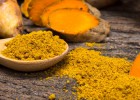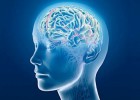Low back pain is a major cause of work absenteeism, disability, and medical costs. In the UK, it has been estimated that the annual direct health care cost of low back pain is approximately £1.6 billion, making back pain one of the most costly medical conditions in the country.
At some point in their lives, the majority of the population is affected by low back pain: lifetime prevalence is estimated at 60-80%. It has been estimated that 50% of low back pain episodes decrease within 4 weeks; however 15-20% of sufferers still experience pain after 1 year. Conventional treatments do not appear to be managing the problem effectively, and this has led people to seek other forms of treatment, such as chiropractic or even reflexology.
Reflexology is a manual technique of acupressure massage, which are practiced on the feet, hands, ears and face.
With more than 5000 years of existence in the ancient culture, reflexology is based on the premise that our bodies are reflected in miniature in our feet or hand. By stimulating these specific ‘reflex zones’ we can enhance our well-being and overall health.
Reflexology is not “recognised” by western medicine and there is limited research about it but this has not stopped reflexology from growing an army of users.
The therapy works with the human body and it does not make a claim to cure ailments.
Reflexology to help back pain is growing in popularity as it is a non invasive therapy and actively promotes the client relaxing to aid relief of this pain that can vary from mild to acute.
In fact back pain is one of the areas of reflexology that has had such a positive and far reaching effect that there has been more research done in this area within the field of reflexology than any other. As part of a small clinical study, 40 people with herniated discs received three treatments of reflexology in a week the report indicated a reduction in pain (0.75 averages on a scale of 4) in 25 of 40 patients.
In 2008, a pilot study was conducted among 15 subjects with low back pain (40 minutes of reflexology, weekly for 6 weeks was given). There were more marked decreases in pain levels observed in subjects treated with reflexology, compared to those taking placebo treatments.
Does this mean reflexology has been proved? Does it mean that reflexology will work for anyone and everyone? As with all holistic treatments, natural or medical a trial to see how it works for you is always recommended. Due to the way reflexology is administered, usually the worst case scenario is that you end the session more relaxed and for many people this treatment works very well to help alleviate their back aches and back pains.
Also, when people think about reflexology, they automatically associate it with the feet, but hand reflexology has certain advantages. For instance, it can be used in situations where there is no time to work on the feet or no space. What is very interesting with hand reflexology is you can treat yourself in public and at any time.
Hand reflexology is the perfect self-help natural therapy that is easy to learn and easy to practice.
Many people opt for the mix and match approach, applying self-help foot techniques, self-help hand techniques and reflexology applied by a therapist or someone else.
Reflexology for back pain, think about it and give it a try, you have nothing to lose.




